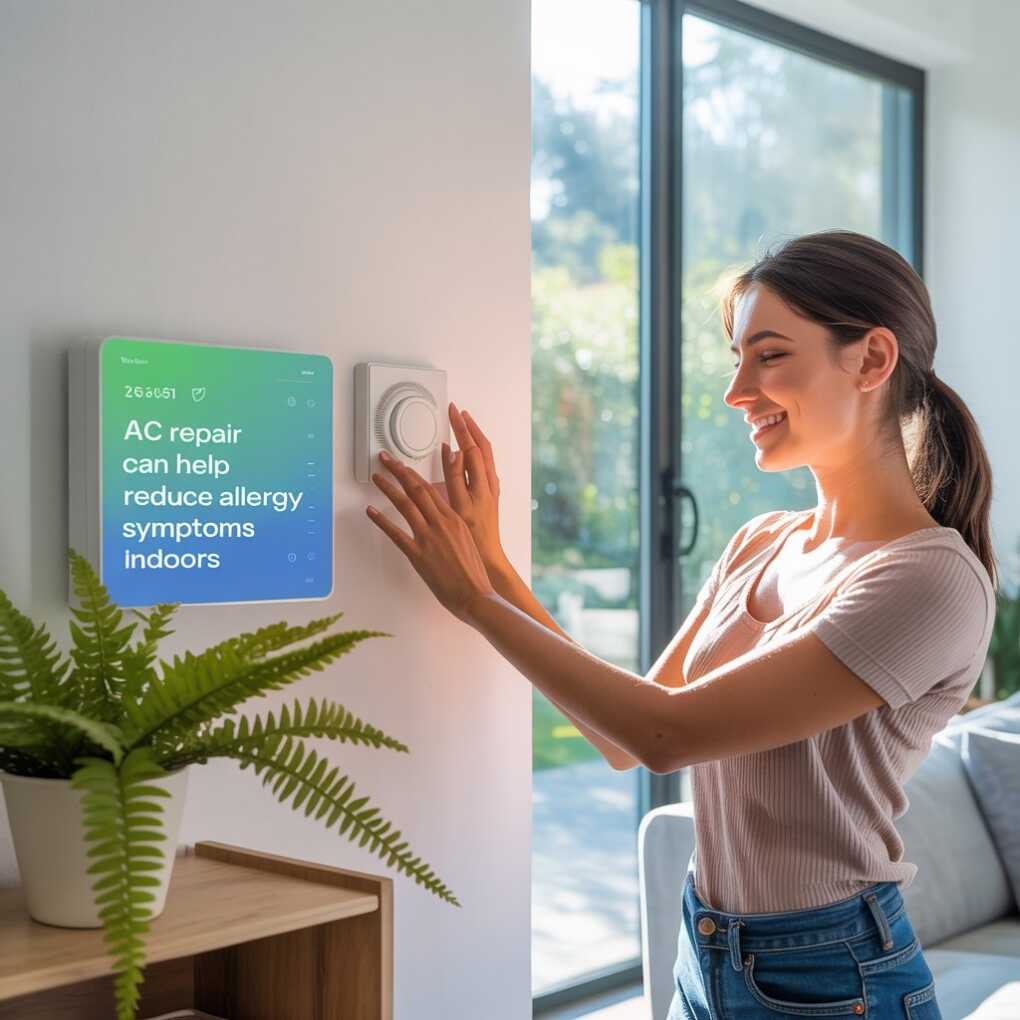Indoor air quality has a significant impact on our health and comfort, particularly for individuals prone to allergies. Many allergy sufferers may not realize the considerable impact their heating, ventilation, and air conditioning (HVAC) systems have on the air they breathe daily. When an air conditioning (AC) unit operates improperly, it can unintentionally become a source of allergens, such as dust, pollen, and mold spores, circulating through the indoor environment. Conversely, a well-maintained and properly functioning AC system can reduce the presence of these allergens, helping to ease symptoms such as sneezing, congestion, and itchy eyes. We will explore the important ways that AC repair contributes to reducing allergy symptoms indoors by improving air filtration, regulating humidity, preventing mold growth, enhancing airflow, and preserving overall system efficiency.

How AC Repair Supports Allergy Relief Indoors
Restoring Effective Air Filtration and Circulation
Air conditioning units play a vital role in filtering and circulating indoor air, trapping airborne particles such as dust, pet dander, pollen, and other common allergens. Filters are designed to capture these particles before air is redistributed throughout the home. However, filters and ducts can become clogged or dirty over time, especially when an AC unit is neglected or malfunctions. A system with a clogged filter forces the AC to work harder while also allowing allergens to recirculate inside the home, which worsens allergy symptoms.
During an AC repair in Windsor, technicians inspect and often replace or clean the air filters to restore their effectiveness. They may also check ductwork for blockages or accumulated debris that could compromise airflow and filtration. This process helps ensure that the system effectively traps allergens rather than spreading them. With proper filtration and air circulation restored, indoor air becomes cleaner, and allergy sufferers often experience relief from symptoms caused by dust and other particles.
Regulating Indoor Humidity to Prevent Allergy Triggers
Humidity levels indoors directly influence the presence of allergy-causing agents, such as mold and dust mites. Both thrive in moist environments, which can be exacerbated when air conditioning systems fail to properly dehumidify the air. Healthy indoor humidity typically ranges between 30% and 50%; above this range, moisture builds up, encouraging the growth of mold and increasing dust mite populations.
Faulty AC units may experience issues such as refrigerant leaks, frozen coils, or malfunctioning compressors, all of which impair their ability to remove excess moisture from the air. AC repair can resolve these mechanical problems and restore proper dehumidification, helping to maintain ideal humidity levels. When humidity is controlled effectively, the conditions that foster mold spores and dust mites diminish, reducing the number of airborne allergens and easing symptoms such as coughing, wheezing, and sinus congestion.
Removing Mold and Bacteria Accumulation in the AC System
Over time, moisture can accumulate in various parts of the AC system, including the evaporator coil, drip pans, and ductwork. This trapped moisture creates a perfect environment for mold and bacterial growth. If these microorganisms develop inside the AC system, they can be dispersed through the air vents, introducing allergens directly into living spaces.
One of the critical benefits of AC repair is identifying and cleaning these internal components to eliminate microbial buildup. Technicians often clean coils, drip pans, and ducts to remove mold colonies and sanitize the system. Addressing these issues during repairs helps prevent recurring contamination and the constant circulation of mold spores within the indoor environment. This process is particularly beneficial for allergy sufferers sensitive to mold, as it minimizes one of the most common indoor allergens and promotes healthier air.
Improving Airflow to Reduce Stagnant, Allergen-Rich Zones
Proper airflow is essential in preventing the accumulation of allergens in specific areas of a home. When air conditioning units or their components—such as fans, blowers, or ducts—experience malfunctions or blockages, airflow can become uneven or restricted. This causes pockets of stagnant air where dust, pollen, and other allergens can concentrate, increasing exposure for residents in those areas.
AC repair often involves diagnosing and fixing problems that limit airflow, such as broken fans, clogged ducts, or faulty motors. Restoring balanced and consistent airflow throughout the home helps disperse allergens evenly, thereby reducing hotspots where allergens might otherwise accumulate. Enhanced ventilation also promotes better air exchange, flushing out stale air and replenishing the environment with fresher, cleaner air. Improved airflow supports allergy relief by lowering the concentration of irritants that trigger sneezing, congestion, and respiratory discomfort.
Extending the Longevity and Consistent Performance of the AC System
Timely repairs and regular air conditioning maintenance not only improve air quality but also help extend the unit’s life and reliability. When an AC unit operates efficiently, it continuously provides clean, conditioned air that minimizes exposure to allergens. On the other hand, neglecting repairs can lead to more frequent breakdowns, decreased filtering ability, and compromised humidity control.
By addressing issues early through AC repair, homeowners can maintain system performance and avoid prolonged periods of inefficient operation, which could worsen indoor air quality. A well-functioning unit continuously filters out allergens, maintains a balanced humidity level, and circulates air effectively—all critical factors in reducing allergy symptoms. Over time, keeping the AC in good repair also prevents costly replacements and interruptions that could leave occupants vulnerable to increased exposure to allergens.
Conclusion
Maintaining and repairing air conditioning systems plays a vital role in controlling indoor allergy symptoms. AC repair improves air filtration and circulation, regulates humidity to discourage mold and dust mites, removes microbial buildup within the system, and ensures proper airflow to avoid allergen hotspots. These improvements help create a cleaner, healthier indoor environment where allergens are minimized and allergy symptoms are lessened. Timely repairs also extend the life of the AC system and pave the way for enhanced filtration upgrades. By understanding the connection between AC maintenance and allergy relief, homeowners can take proactive steps to enhance their indoor air quality and comfort throughout the year.
